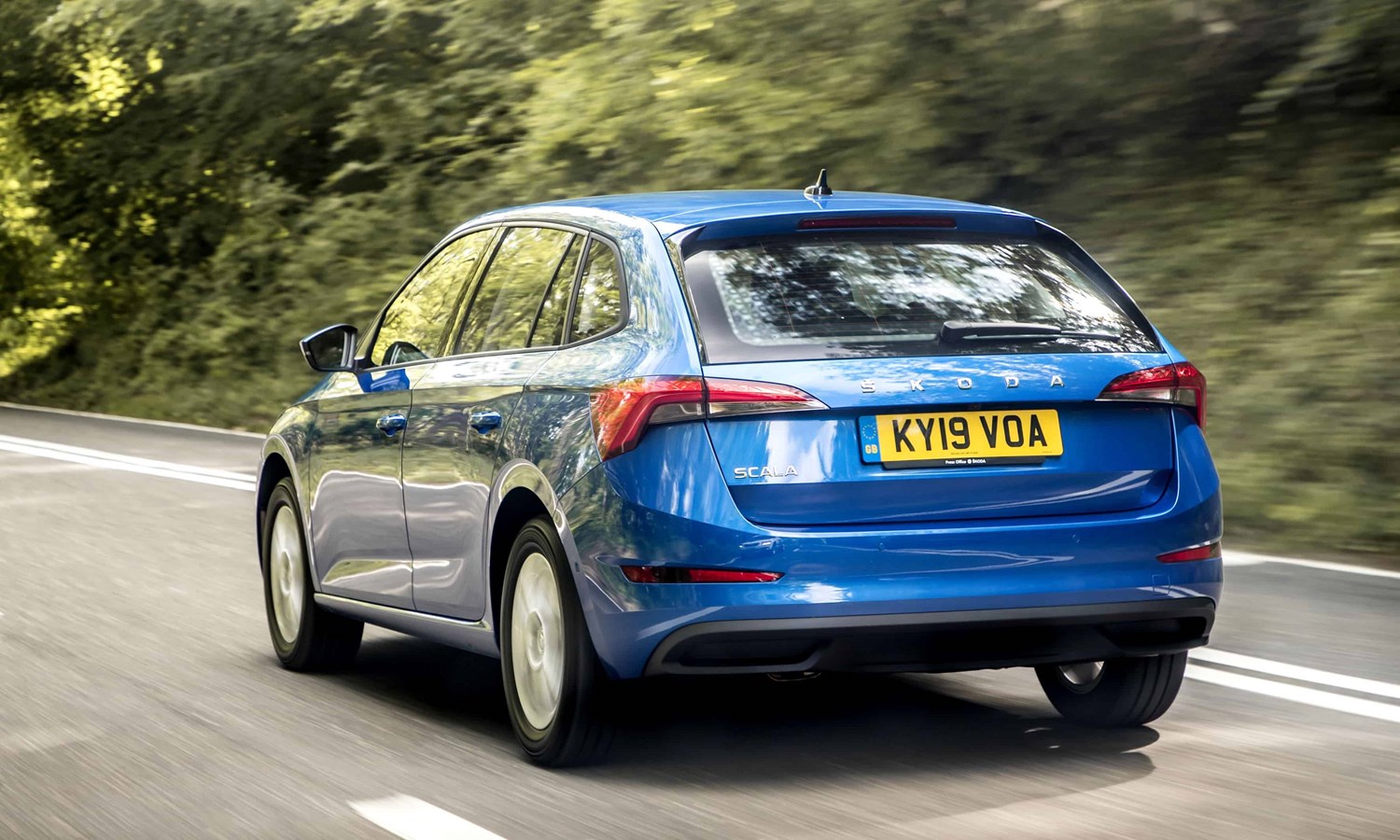Space and practicality
Practicality and space are two things that the Scala is very good at – despite being based on the same platform as the compact Volkswagen Polo.
The boot is one of the areas where this Skoda seriously impresses, with 467 litres of room on offer with five seats in place – that’s vastly more than the 370 and 375 litres that you’d find with the Vauxhall Astra and Ford Focus respectively. That space also continues to exceed rivals when you fold the rear seats down, too – increasing the room on offer to 1,410 litres. Plenty of storage space is also dotted around the cabin, while the Scala benefits from many ‘Simply Clever’ features that this brand has become known for – a handy umbrella underneath the rear seat is a particularly practical touch.
Rear seat space is also generous, with the Scala being one of the best hatches in this class for room – especially for adults. Even with an optional panoramic sunroof added, it doesn’t really impact headroom, either. Autonomous emergency braking and lane-keep assist are both fitted as standard.
Engines
While the Scala engine line-up isn’t quite as extensive as those in rivals, there will still be a powertrain to suit most tastes, though mild- and plug-in hybrids are yet to be introduced to this Skoda.
In terms of petrol units, the range kickstarts with a 94bhp 1.0-litre petrol engine mated to a five-speed manual transmission, while a 114bhp unit gets an extra gear, and also comes with the option of a seven-speed DSG automatic transmission.
If you fancy a bit of extra punch, you should choose the most powerful engine in the line-up – a 148bhp 1.5-litre petrol unit that’s available with the choice of manual or automatic gearbox. With this unit, the Scala can reach 0-60mph in eight seconds and hit a top speed of 137mph.
Drivers who cover more miles each year should consider the 113bhp 1.6-litre diesel unit, which is offered with both manual and automatic transmissions.
Running costs
Regardless of which engine you go for, all powertrain options are quite efficient and are unlikely to be expensive to run. The 1.6-litre diesel engine mated to a manual transmission will be the cheapest to live with, though, as it’s able to return up to 60.1mpg, while having low CO2 emissions of just 106g/km. That said, even the 1.5-litre petrol unit (the thirstiest) can still manage a claimed 45mpg, with CO2 emissions of 115g/km.
The low running costs also make it an appealing company car option, with the 1.0-litre petrol unit having a low benefit-in-kind of just 26 per cent.




